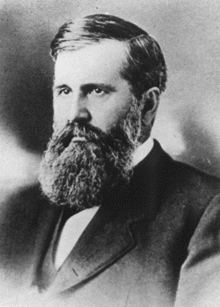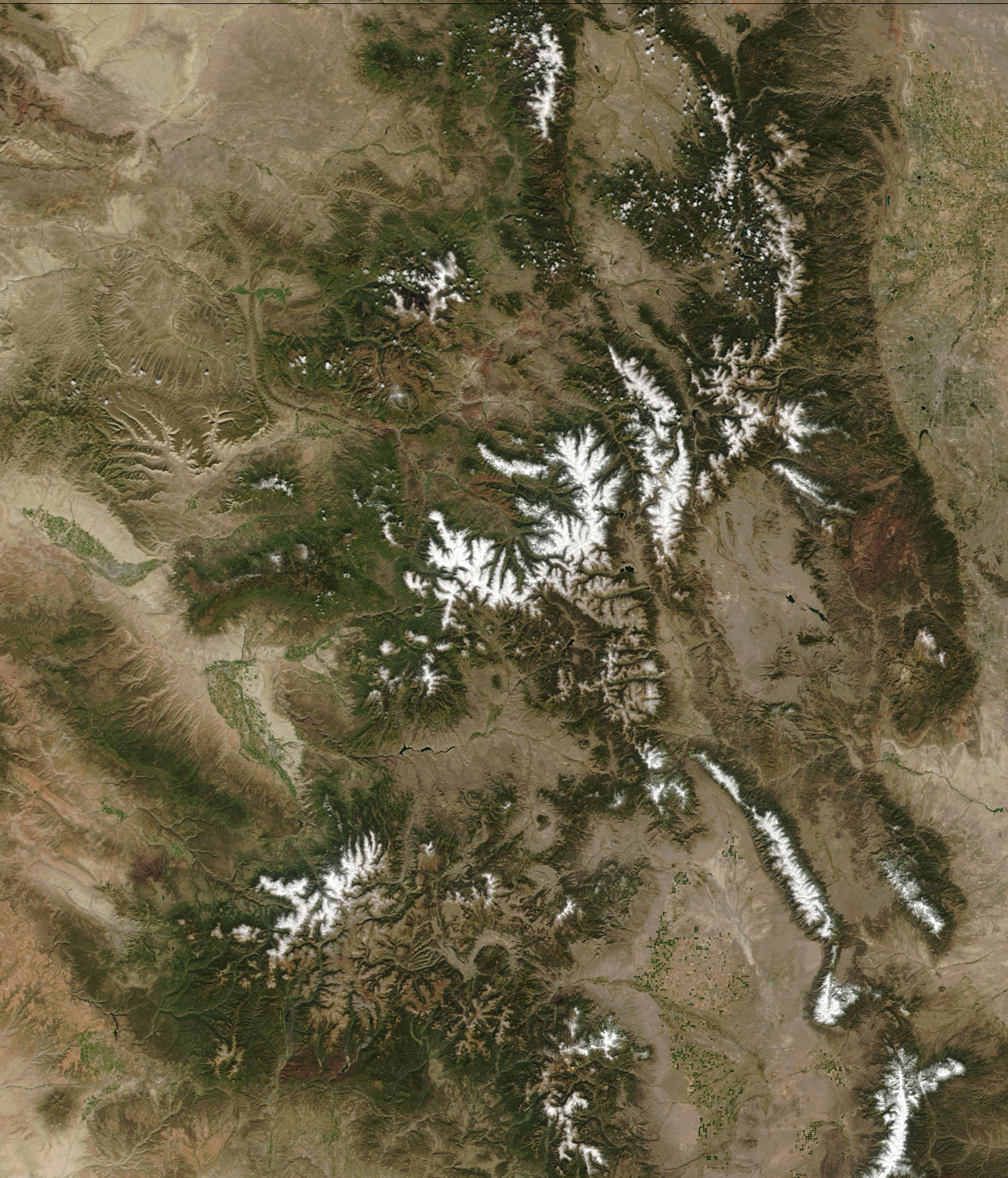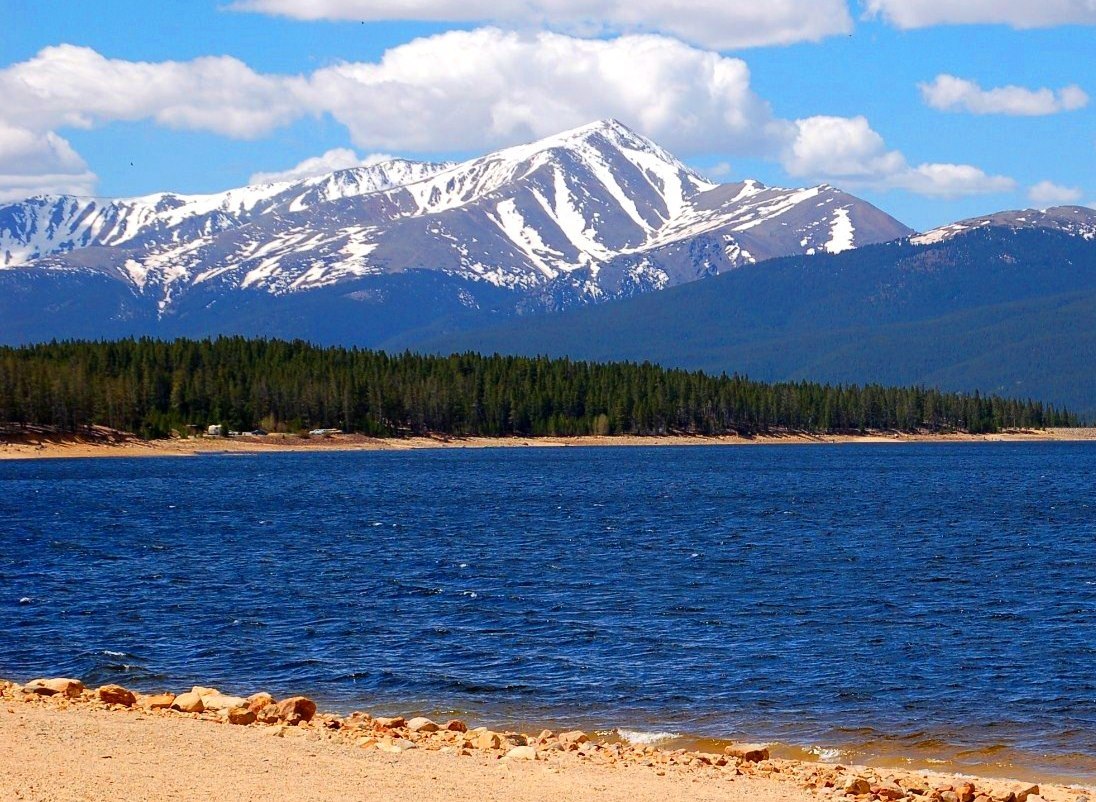|
Mount Elbert
Mount Elbert is the highest summit of the Rocky Mountains, the highest point in the U.S. state of Colorado, and the second-highest summit in the contiguous United States (after Mount Whitney). The ultra-prominent fourteener is the highest peak in the Sawatch Range, as well as the highest point in the entire Mississippi River drainage basin. Mount Elbert is located in San Isabel National Forest, southwest ( bearing 223°) of the City of Leadville in Lake County, Colorado.The elevation of Mount Elbert includes an adjustment of +1.995 m (+6.55 ft) from NGVD 29 to NAVD 88. The mountain was named in honor of a Colorado statesman, Samuel Hitt Elbert, who was active in the formative period of the state and Governor of the Territory of Colorado from 1873 to 1874. Henry W. Stuckle of the Hayden Survey was the first to record an ascent of the peak, in 1874. The easiest and most popular climbing routes are categorized as Class 1 to 2 or A+ in mountaineering parla ... [...More Info...] [...Related Items...] OR: [Wikipedia] [Google] [Baidu] |
Colorado
Colorado (, other variants) is a state in the Mountain West subregion of the Western United States. It encompasses most of the Southern Rocky Mountains, as well as the northeastern portion of the Colorado Plateau and the western edge of the Great Plains. Colorado is the eighth most extensive and 21st most populous U.S. state. The 2020 United States census enumerated the population of Colorado at 5,773,714, an increase of 14.80% since the 2010 United States census. The region has been inhabited by Native Americans and their ancestors for at least 13,500 years and possibly much longer. The eastern edge of the Rocky Mountains was a major migration route for early peoples who spread throughout the Americas. "''Colorado''" is the Spanish adjective meaning "ruddy", the color of the Fountain Formation outcroppings found up and down the Front Range of the Rocky Mountains. The Territory of Colorado was organized on February 28, 1861, and on August 1, 1876, U.S. President Ulyss ... [...More Info...] [...Related Items...] OR: [Wikipedia] [Google] [Baidu] |
Sawatch Range
The Sawatch Range or Saguache RangeThe place name "Saguache” is pronounced “Sawatch” . This name derives from the Ute language noun "''sawup''" meaning "sand dunes" and is spelled using the Spanish language version of this name "Saguache". is a high and extensive mountain range in central Colorado which includes eight of the twenty highest peaks in the Rocky Mountains, including Mount Elbert, at elevation, the highest peak in the Rockies. The range is oriented along a northwest–southeast axis, extending roughly from in the north to in the south. The range contains fifteen peaks in excess of , also known as fourteeners. The range forms a part of the Continental Divide, and its eastern side drains into the headwaters of the Arkansas River. The western side of the range feeds the headwaters of the Roaring Fork River, the Eagle River, and the Gunnison River, tributaries of the Colorado River. The Sawatch mountains in general are high, massive, and relatively gentle ... [...More Info...] [...Related Items...] OR: [Wikipedia] [Google] [Baidu] |
List Of Mountain Ranges Of Colorado
This is a list of the major mountain ranges in the U.S. State of Colorado. All of these ranges are considered subranges of the Southern Rocky Mountains. As given in the table, topographic elevation is the vertical distance above the reference geoid, a mathematical model of the Earth's sea level as an equipotential gravitational surface. The topographic prominence of a summit is the elevation difference between that summit and the highest or key col to a higher summit. The topographic isolation of a summit is the minimum great-circle distance to a point of equal elevation. All elevations in this article include an elevation adjustment from the National Geodetic Vertical Datum of 1929 (NGVD 29) to the North American Vertical Datum of 1988 (NAVD 88). For further information, please see this United States National Geodetic Surveybr>note If an elevation or prominence is calculated as a range of values, the arithmetic mean is shown. __TOC__ Mountain ranges Gallery Image:Mo ... [...More Info...] [...Related Items...] OR: [Wikipedia] [Google] [Baidu] |
List Of The Highest Major Summits Of Colorado
The following sortable table comprises the 117 highest mountain peaks of the U.S. State of Colorado with at least of elevation and at least of topographic prominence. Topographic elevation is the vertical distance above the reference geoid, a mathematical model of the Earth's sea level as an equipotential gravitational surface. The topographic prominence of a summit is the elevation difference between that summit and the highest or key col to a higher summit. The topographic isolation of a summit is the minimum great-circle distance to a point of equal elevation. This article defines a significant summit as a summit with at least of topographic prominence, and a major summit as a summit with at least of topographic prominence. An ultra-prominent summit is a summit with at least of topographic prominence. There are three ultra-prominent summits in Colorado. All elevations in this article include an elevation adjustment from the National Geodetic Vertical Datum of ... [...More Info...] [...Related Items...] OR: [Wikipedia] [Google] [Baidu] |
Fourteener
In the mountaineering parlance of the Western United States, a fourteener is a mountain peak with an elevation of at least . The 96 fourteeners in the United States are all west of the Mississippi River. Colorado has the most (53) of any single state; Alaska is second with 29. Many peak baggers try to climb all fourteeners in the contiguous United States, one particular state, or another region. __TOC__ Qualification criteria The summit of a mountain or hill may be measured in three principal ways: #Topographic elevation is the height of the summit above a geodetic sea level.All elevations in the 48 contiguous United States include an elevation adjustment from the National Geodetic Vertical Datum of 1929 (NGVD 29) to the North American Vertical Datum of 1988 (NAVD 88). For further information, please see this United States National Geodetic Surveybr>noteIf the elevation or prominence of a summit is calculated as a range of values, the arithmetic mean is shown. #Topo ... [...More Info...] [...Related Items...] OR: [Wikipedia] [Google] [Baidu] |
Contiguous United States
The contiguous United States (officially the conterminous United States) consists of the 48 adjoining U.S. states and the Federal District of the United States of America. The term excludes the only two non-contiguous states, Alaska and Hawaii (also the last ones admitted to the Union), and all other offshore insular areas, such as American Samoa, Guam, the Northern Mariana Islands, Puerto Rico, and the U.S. Virgin Islands. The colloquial term "Lower48" is used also, especially in relation to just Alaska (Hawaii is farther south). The related but distinct term continental United States includes Alaska (which is also on the continent of North America but separated from the 48 states by British Columbia and Yukon of Canada), but excludes the Hawaiian Islands and all U.S. territories in the Caribbean and the Pacific. The greatest distance (on a great-circle route) entirely within the contiguous U.S. is 2,802 miles (4,509 km), between Florida and the State of Washington; th ... [...More Info...] [...Related Items...] OR: [Wikipedia] [Google] [Baidu] |
Mount Whitney
Mount Whitney (Paiute: Tumanguya; ''Too-man-i-goo-yah'') is the highest mountain in the contiguous United States and the Sierra Nevada, with an elevation of . It is in East–Central California, on the boundary between California's Inyo and Tulare counties, west-northwest of North America's lowest point, Badwater Basin in Death Valley National Park, at below sea level. The mountain's west slope is in Sequoia National Park and the summit is the southern terminus of the John Muir Trail, which runs from Happy Isles in Yosemite Valley. The eastern slopes are in Inyo National Forest in Inyo County. Geography Mount Whitney's summit is on the Sierra Crest and the Great Basin Divide. It lies near many of the Sierra Nevada's highest peaks. The peak rises dramatically above the Owens Valley, sitting or just over above the town of Lone Pine to the east, in the Owens Valley. It rises more gradually on the west side, lying only about above the John Muir Trail at Guitar Lake. T ... [...More Info...] [...Related Items...] OR: [Wikipedia] [Google] [Baidu] |
Ultra-prominent Peak
An ultra-prominent peak, or Ultra for short, is a mountain summit with a topographic prominence of or more; it is also called a P1500. The prominence of a peak is the minimum height of climb to the summit on any route from a higher peak, or from sea level if there is no higher peak. There are approximately 1,524 such peaks on Earth. Some well-known peaks, such as the Matterhorn and Eiger, are not Ultras because they are connected to higher mountains by high cols and therefore do not achieve enough topographic prominence. The term "Ultra" originated with earth scientist Steve Fry, from his studies of the prominence of peaks in Washington in the 1980s. His original term was "ultra major mountain", referring to peaks with at least of prominence. Distribution Currently, 1,518 Ultras have been identified above sea level: 639 in Asia, 356 in North America, 209 in South America, 120 in Europe (including 12 in the Caucasus), 84 in Africa, 69 in Oceania, and 41 in Antarctica. Man ... [...More Info...] [...Related Items...] OR: [Wikipedia] [Google] [Baidu] |
Samuel Hitt Elbert
Samuel Hitt Elbert (April 3, 1833 – November 27, 1899) was an attorney in the Nebraska Territory before settling in the Colorado Territory. He served as the Secretary of the territory and from 1873 to 1874, he was the Governor of the Colorado Territory. He was a justice of the Colorado Supreme Court from 1876 to 1888 and was chief justice from 1879 to 1882. He was married to Josephine Evans, the daughter of Territorial Governor John Evans. She died of tuberculosis following the birth and death of her only child; the Evans Memorial Chapel was built by her father in her memory. Early life and education Samuel Hitt Elbert was born in Logan County, Ohio. His parents were Achsa Hitt, the daughter of Rev. Samuel Hitt, and John Downs Elbert, a physician and surgeon. He descends from early colonists and Huguenots. His great-grandfather, Dr. John Lodman Elbert, was a surgeon during the American Revolution. He moved with his family to the Iowa Territory in 1840. He attended public s ... [...More Info...] [...Related Items...] OR: [Wikipedia] [Google] [Baidu] |
Mississippi River
The Mississippi River is the second-longest river and chief river of the second-largest drainage system in North America, second only to the Hudson Bay drainage system. From its traditional source of Lake Itasca in northern Minnesota, it flows generally south for to the Mississippi River Delta in the Gulf of Mexico. With its many tributaries, the Mississippi's watershed drains all or parts of 32 U.S. states and two Canadian provinces between the Rocky and Appalachian mountains. The main stem is entirely within the United States; the total drainage basin is , of which only about one percent is in Canada. The Mississippi ranks as the thirteenth-largest river by discharge in the world. The river either borders or passes through the states of Minnesota, Wisconsin, Iowa, Illinois, Missouri, Kentucky, Tennessee, Arkansas, Mississippi, and Louisiana. Native Americans have lived along the Mississippi River and its tributaries for thousands of years. Most were hunter-ga ... [...More Info...] [...Related Items...] OR: [Wikipedia] [Google] [Baidu] |
List Of Mountain Peaks Of The Rocky Mountains
This article comprises three sortable tables of major mountain peaksThis article defines a significant summit as a summit with at least of topographic prominence, and a major summit as a summit with at least of topographic prominence. All summits in this article have at least 500 meters of topographic prominence. An ultra-prominent summit is a summit with at least of topographic prominence. of the Rocky Mountains of North America. The summit of a mountain or hill may be measured in three principal ways: #The topographic elevation of a summit measures the height of the summit above a geodetic sea level.All elevations in the 48 states of the contiguous United States include an elevation adjustment from the National Geodetic Vertical Datum of 1929 (NGVD 29) to the North American Vertical Datum of 1988 (NAVD 88). For further information, please see this United States National Geodetic Surveybr>noteIf the elevation or prominence of a summit is calculated as a range of ... [...More Info...] [...Related Items...] OR: [Wikipedia] [Google] [Baidu] |
Absolute Bearing
In navigation, bearing or azimuth is the horizontal angle between the direction of an object and north or another object. The angle value can be specified in various angular units, such as degrees, mils, or grad. More specifically: * Absolute bearing refers to the angle between the magnetic north (''magnetic bearing'') or true north (''true bearing'') and an object. For example, an object to due east would have an absolute bearing of 90 degrees. Thus, it is the same as azimuth.U.S. Army, ''Advanced Map and Aerial Photograph Reading'', Headquarters, War Department, Washington, D.C. (17 September 1941), pp. 24-2/ref> * #Relative, Relative bearing refers to the angle between the craft's forward direction (heading) and the location of another object. For example, an object relative bearing of 0 degrees would be immediately in front; an object relative bearing 180 degrees would be behind. Bearings can be measured in mils, points, or degrees. Thus, it is the same as an ''azimut ... [...More Info...] [...Related Items...] OR: [Wikipedia] [Google] [Baidu] |







